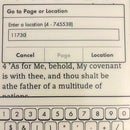Introduction: Figure 8 Caliper
I watched someone use an ordinary caliper to measure the thickness of something not uniform in thickness. He needed to know the thickness at a point difficult to measure accurately. He made a pencil mark near the axis of the caliper, spread the caliper to remove it from the item, and then tried to position the caliper at his pencil mark again. Perhaps it was close enough for his purposes, but there was no way it could be accurate. He is family and I decided I wanted to attempt a figure 8 caliper for him. The photo shows my first attempt. On a second attempt, I would make the opening spaces nearer to a circle. The gap near the rule is exactly the same as the gap around the object. If I were unable to measure the gap around the object directly, a figure 8 caliper allows me to reproduce that gap out in open space where I can measure it. A figure 8 caliper is often used by wood turners making bowls when they need to know the thickness of the bowl sides, but cannot get an accurate measurement with a standard caliper. Commercial versions are readily available at reasonable prices.
Materials
- 1/8 x 1/2 inch mild steel bar
- 1/8 x 1 inch mild steel bar
- 1/4 inch steel rod
- 1/4 inch wing nut
Tools
- Metal saw (hand or power)
- Grinder
- Drill
- 1/4 inch x 20 thread dye for cutting threads
- Spring clamps
- MIG welder
- Measuring tools
- File
- Center punch (spring loaded)
- Divider
Step 1: Begin at the Center
I cut two squares from 1/8 x 1 inch steel. I drilled a 1/4 inch hole at the center of each. I beveled the sides from the factory for weld preparation.
Step 2: Prepare and Weld Steel Bar
I beveled the end of a steel bar and clamped it to a piece of aluminum angle. The second photo shows my weld. The edge of the aluminum angle makes an easy straightedge for alignment. I tried to center the bar with the hole I drilled. Each piece welded to the center squares was cut to be about 2 3/4 inches long.
Step 3: Watch the Angles
I cut the ends of the 1/2 inch bar at an angle so the assembled pieces are not duplicates, but mirror images of each other.
Step 4: Second Segment
I could simply have bent 1/4 inch rod to make the arms of my caliper, but I did not have enough rod. I should have made the angle in the photo more acute for a larger opening between the arms of the caliper. But, a set of calipers for different situations is also sometimes necessary. Most importantly, I was trying to keep the angles and the lengths on each of the four arms as close to the same as possible. Weld when ready.
Step 5: Fit and Trim
I did grind smooth the welds where 1/2 inch bar meets the 1 inch squares. I also put threads on 1/4 in h rod and carefully cut it to a desired length. The smooth part of the rod fits very snugly without play in the holes I drilled. I wanted the threaded portion to be above the holes I drilled. I welded the rod in the hole on what is the underside in the second photo. A washer adds a buffer between the threaded and unthreaded part of the rod so the wingnut can tighten the two pieces against one another, and yet smooth rod makes a bearing surface for the pivot.
In the first photo the ends are not quite even. I trimmed the longer end to make it even. Accuracy will depend on both halves of the caliper where the points meet being mirror images of one another so the points meet equidistant from the center axis.
Step 6: End Segments
To make the end segments that close the caliper opening on each end, I used a solid piece. The first photo shows measuring for that. The second photo shows the bevels for weld preparation. The third photo shows cutting the end segments to make the points where the calipers will meet. This approach yields relatively good alignment and fit without difficulty.
Step 7: Accuracy and Use
The points where the arms of the caliper must meet equidistant from the center axis. I used a center punch to make a dimple that marks the center of the rod that makes the pivot. I used dividers to scribe a faint mark on each set of end segments. I also narrowed the points by trimming where the points are to meet.
All was going well, but something happened, and there was a slight gap between the points of the calipers at one end when they met at the other end. I checked and the points were equidistant from the pivot, so, I carefully filed the points that met already until both sets of points met when the calipers are closed. I opened the calipers and set them arbitrarily. Then I carefully measured the gaps st both ends to be certain they were identical. Grind to smooth rough edges and corners.
To use, position the calipers so the points on one end touch your object where you need to know the thickness. Squeeze the arms until the points touch the object on both sides. Tighten the wingnut to lock the calipers. Measure the outer open gal to know the thickness of your object where you need to measure it.




